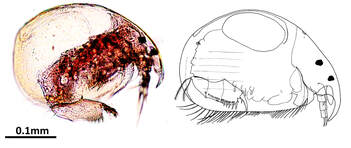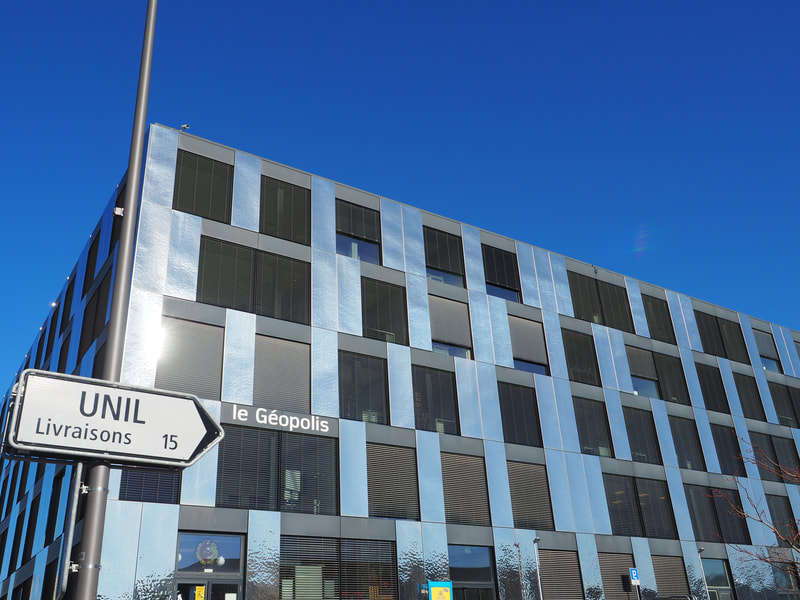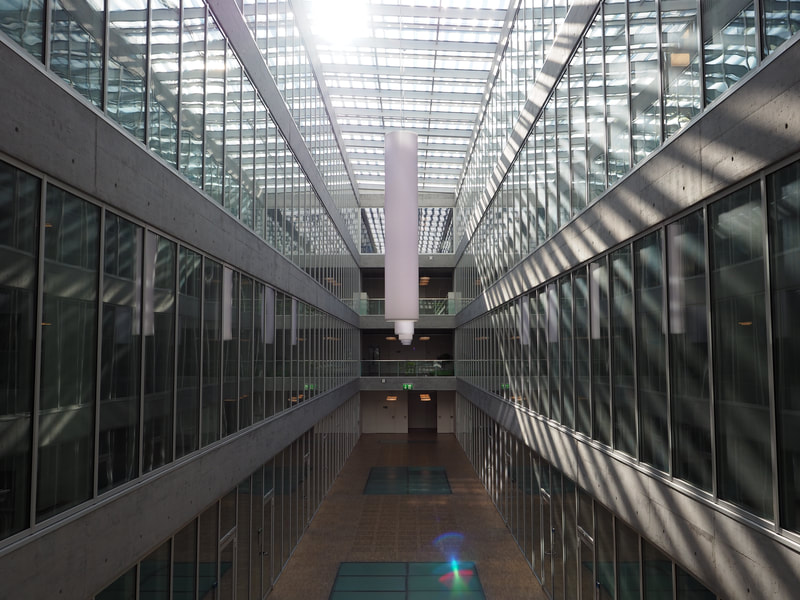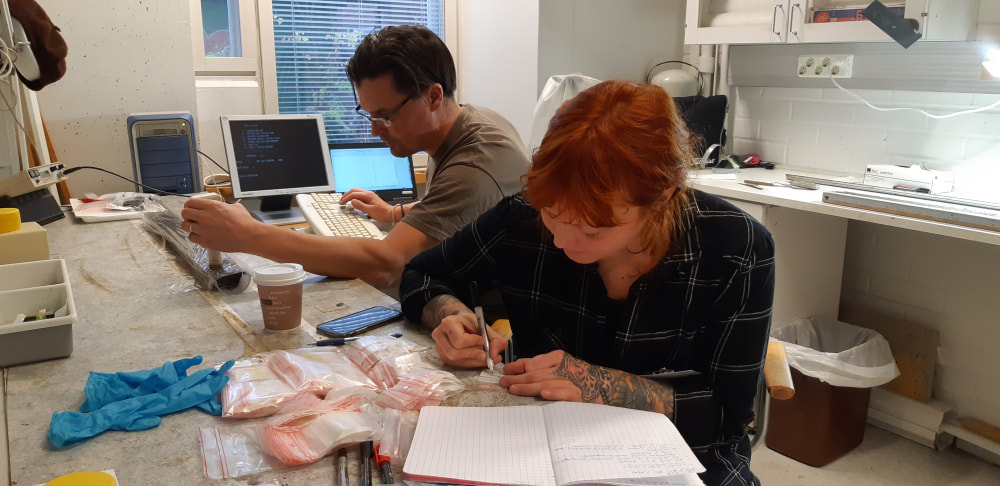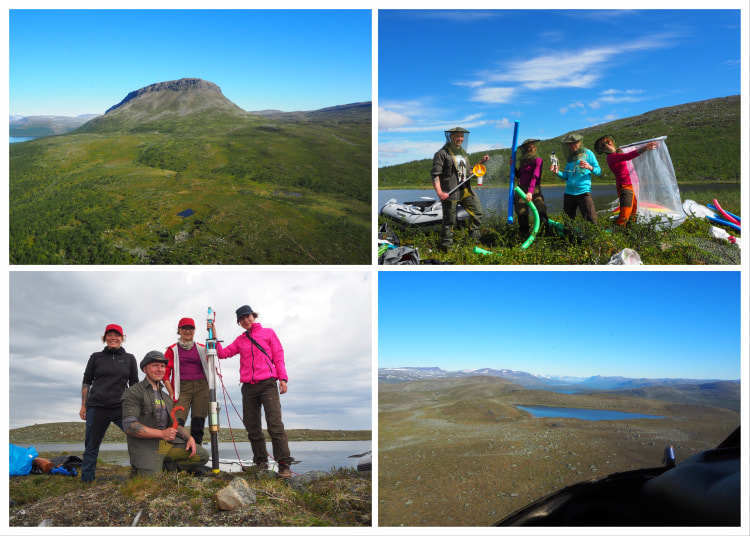News
September 11, 2020
Despite the long corona-crisis, our project is proceeding nicely. We had to postpone some of the planned field work on the mountain lakes of Piemonte, Northern Italy until next summer. Fortunately, Dr. Marttiina Rantala and the new member of SCUM-team BSc Sanna Atti bravely collected material for Sanna's MSc thesis from two lakes in the Italian Alps. Sanna started to work in the project as an MSc student and research assistant this summer and her studies aim toward a PhD thesis in the future. Sanna's working title for the MSc thesis is "Traces of sunlight in diatom community composition and trait distribution in two mountain lakes".
Our first two papers on the project are out in Journal of Photochemistry and Photobiology B and Quaternary Science Reviews; please check them - I like them both very much ;)
Despite the long corona-crisis, our project is proceeding nicely. We had to postpone some of the planned field work on the mountain lakes of Piemonte, Northern Italy until next summer. Fortunately, Dr. Marttiina Rantala and the new member of SCUM-team BSc Sanna Atti bravely collected material for Sanna's MSc thesis from two lakes in the Italian Alps. Sanna started to work in the project as an MSc student and research assistant this summer and her studies aim toward a PhD thesis in the future. Sanna's working title for the MSc thesis is "Traces of sunlight in diatom community composition and trait distribution in two mountain lakes".
Our first two papers on the project are out in Journal of Photochemistry and Photobiology B and Quaternary Science Reviews; please check them - I like them both very much ;)
October 3, 2019
Dr. Magdalena Suchora (left in the picture below) from Maria Curie-Sklodowska University in Lublin, Poland is visiting the Lahti campus for four weeks as a pioneer in the Pioneers into Practice (PIP) -program, which promotes innovative collaboration and research visits on climate research. I am acting as the host for the visit and in the PIP-program. We visited the Vesijärvi Foundation, meeting our colleague Dr. Mirva Ketola, who is working in the foundation. The history of us three goes back more than 15 years, as we all were PhD students working on fossil Cladocera!
Dr. Magdalena Suchora (left in the picture below) from Maria Curie-Sklodowska University in Lublin, Poland is visiting the Lahti campus for four weeks as a pioneer in the Pioneers into Practice (PIP) -program, which promotes innovative collaboration and research visits on climate research. I am acting as the host for the visit and in the PIP-program. We visited the Vesijärvi Foundation, meeting our colleague Dr. Mirva Ketola, who is working in the foundation. The history of us three goes back more than 15 years, as we all were PhD students working on fossil Cladocera!
|
September 1, 2019
Oh is it christmas already??? I have now two brilliant postdocs working in my project: Dr. Marttiina Rantala is back from Switzerland to start her diatom and stable isotope analyses on the SCUM samples. Dr. Henriikka Kivilä is already deep in the world of fossil algal pigments, soon getting ready her first results. So, in short. We are advancing smoothly. Hopefully will get our first SCUM paper out this year! |
|
July 5, 2019
We published a press release on our Rhynchotalona latens findings through University of Helsinki for the National News Agency STT. Amazingly, the topic got a lot of attention in the media!!! The press release was further published, for example, in the two largest tabloids (Iltasanomat and Iltalehti), national news channel YLE, and several regional news papers, e.g. Lahti's local media Etelä-Suomen Sanomat. |
|
July 3, 2019
Here is a press release from Senckenberg Research Institute and Natural History Museum on the cladoceran species (Rhynchotalona latens), which we recently described to science. |
May 8, 2019
Read about our research theme "In Search of Past Underwater Light" from a blog text by Marttiina Rantala in Early Pages.
Read about our research theme "In Search of Past Underwater Light" from a blog text by Marttiina Rantala in Early Pages.
|
May 6, 2019
Our student Henriikka Kivilä defended successfully her PhD thesis "Functional paleoecology and allochthonous inputs in high latitude lake food webs" in University of Jyväskylä. Congratulations, Henriikka! Dr. Marie-Elodie Perga (University of Lausanne, Switzerland) was the opponent and Dr. Mikko Kiljunen (University of Jyväskylä) acted as the custos. The thesis was supervised by myself, Dr. Tomi P. Luoto (Univ. Helsinki), Prof. Milla Rautio (Univeristy of Quebec in Chicoutimi, Canada) and Dr. Kiljunen. Pre-evaluation was done by Prof. Yarrow Axford (Northwestern University, USA) and Dr. Stefan Engels (Birkbeck University of London, UK). The official bulletin of her thesis can be found from here, in Finnish only. Henriikka's career will continue as a postdoctoral researcher in the SCUM-project starting 1st of June. |
April 30, 2019
One of my most significant work just came out in Hydrobiologia, it is an open access article, so feel free to download it. This paper is about a new Chydoridae (Cladocera) species (Rhynchotalona latens) that we have been chasing for more than a decade.
One of my most significant work just came out in Hydrobiologia, it is an open access article, so feel free to download it. This paper is about a new Chydoridae (Cladocera) species (Rhynchotalona latens) that we have been chasing for more than a decade.
|
April 2, 2019
Greeting from the spring! I just had a two week research visit at the Institute of Earth Surface Dynamics of University of Lausenne, Switzerland for a research collaboration related to the paleo-optics of Alpine lakes. This was a very fruitful visit, me being able to take forward our experimental results and further look into the future for the Alpine field work next year. I gave a seminar talk "Aquatic paleo-optics" at the institute focusing on our most previous results from NW Finnish Lapland: Bio-optical lake water properties, controlling the penetration of sun light and UV radiation, influence the ecological structure and functions in aquatic food webs and ecosystem level biogeochemical processes. Climate warming, mobilizing terrestrial carbon from catchment soils, may fundamentally alter optical environment and threaten freshwaters, causing also societal problems through degraded water quality. Here, a long-term perspective of centuries to millennia was applied to understand natural changes in lake optics and underwater UV exposure in pristine tundra lakes in Finnish Lapland (70°N). The paleolimnological approach utilizing sediment cores was complemented with in situ experiments to examine the fate of organic matter in lake water and sediments under UV exposure. The experiments showed that terrestrial carbon significantly degrades in UV treatment increasing UV exposure and causing biochemical changes in aquatic biota and accumulating sediments. Sediment cores revealed a connection in organic carbon quality, UV exposure, and natural climate variability during the Holocene as UV-attenuating carbon compounds generally increased during the warm climate periods (Holocene Thermal Maximum and recent warming) and reduced during cold climate episodes (Late Holocene cooling and the Little Ice Age). The work in similar experimental and paleolimnological settings continues in Alpine lakes. |
|
December 20, 2018
My PhD student Henriikka Kivilä from University of Jyväskylä and our project collaborator Dr. Carsten Meyer-Jacob from PEARL, Queen's University, Canada visited the Lahti campus. We spent a nice couple of days planning the future of SCUM-project and I was also allowed to enjoy the scientific outcomes of these brilliant young minds through their presentations. |
|
November 13, 2018
We visited Dr. Antti Ojala at the Geological Survey of Finland to open and subsample our UWITEC cores. So, things proceed as planned and these master cores are now on their way to be analyzed for VNIRS-inferred total organic carbon (of lake water) by Dr. Carsten Meyer-Jacob in Canada and C and N stable isotope composition of organic matter by NIWA in New Zealand. It is always exciting to open cores and see what they hold in. It was a bonus, that the sequence from our tundra lake (core at the left picture below) seemed to cover the entire Holocene with some clearly visible horizons of clay-gyttja, gyttja and vegetative macrofossils. The other one from the lake located in mountain birch woodland was not that exciting, reminding mostly of just poop :D |
|
October 2, 2018
I just got the first limnological results of our experiments into the e-mail today and more are coming shortly. The autumn has started nicely, since I do not need to apply for research funding. Usually all September has gone to preparing funding applications but now I have been able focus on science. Not too seriously though…. |
|
August 14, 2018
One more week spent sampling in the Kilpisjärvi region of NW Finnish Lapland. This time we collected water and sediment samples from our experimental containers with different light exposures from the two study lakes. We collected and partly carried (oh yes, we again got to fly with a helicopter) in total 150 L of water to be filtered and pre-treated in the laboratory of Kilpisjärvi Biological Station. Quite exciting to get the first results soon, since the water color and organic matter composition was different even with eyesight and first impression. I think it is time to put our hands in the air for some goal celebrations. |
July 31, 2018
A paper of ours on cladoceran responses to UV radiation just came out in Journal of Biogeography. I like it :)
A paper of ours on cladoceran responses to UV radiation just came out in Journal of Biogeography. I like it :)
|
June 29, 2018
Our group participated in the IPA-IAL 2018 conference on “Unravelling the past and future of lakes” in Stockholm, Sweden between 17-21 June by giving two poster presentations (Nevalainen et al. & Luoto et al.) and two oral presentations (Kivilä et al. & Rantala et al.). My own presentation was about “Paleo-optics of tundra lakes“, where I presented two coherent cladoceran based UV reconstructions from northern Finnish Lapland showing consistently increased aquatic UV exposure during the Little Ice Age (low in-lake production) and the late 20th century (ozone depletion of the 1970s-80s). Articles are coming up. |
|
June 11, 2018
Last week the project experienced some crazy and very serious brainstorming related to the upcoming field work in Kilpisjärvi region in Finnish Lapland. We are planning in situ experimental settings for two lakes (a tundra lake and a lake located in mountain birch woodland) to investigate DOC photodegradation and impacts of UV on pigment composition of aquatic biota. This could be fun…!!! |
April 11, 2018
Participated in this very nice review paper on Arctic hydroclimate dynamics published in Climate of the Past, check it out!!!
March 16, 2018
Ok, this was out months ago but still Lago Maggiore makes my heart sing. See our paper on long-term cladoceran functionality in journal Water.
January 18, 2018
New year and new challenges! A new and brilliant postdoctoral researcher, Dr. Marttiina Rantala, started to work with sediment biogeochemistry in the SCUM-project 1st of January. Her work will focus on extracting and developing “sediment optical signal” in high altitude lakes in northern Fennoscandia and in the European Alps. Marttiina, you are warmly welcome to the project.
Participated in this very nice review paper on Arctic hydroclimate dynamics published in Climate of the Past, check it out!!!
March 16, 2018
Ok, this was out months ago but still Lago Maggiore makes my heart sing. See our paper on long-term cladoceran functionality in journal Water.
January 18, 2018
New year and new challenges! A new and brilliant postdoctoral researcher, Dr. Marttiina Rantala, started to work with sediment biogeochemistry in the SCUM-project 1st of January. Her work will focus on extracting and developing “sediment optical signal” in high altitude lakes in northern Fennoscandia and in the European Alps. Marttiina, you are warmly welcome to the project.
|
December 18, 2017
Kick off -meeting of the SCUM-project at the Lahti campus with a bunch of wonderful people and SCUM-gingerbreads (S = me, C = Adj. Prof. Tomi Luoto, U = MSc Henriikka Kivilä, M = PhD Marttiina Rantala). This will be great! |
September 5, 2017
Change loves who is living!!! I will be located from now on in University of Helsinki at the Lahti University Campus. Excited to kick off my 5-year Academy Research Fellow project SCUM (Sedimentary perspective on UV radiation and organic carbon fluctuations in mountain lakes).
April 27, 2017
Oh my, I got funded by the Academy of Finland for an Academy Research Fellow project for five years. Check the faculty announcement (in Finnish only) on this.
The project “Sedimentary perspective on UV radiation and organic carbon fluctuations in mountain lakes” kicks off September this year with colleagues from our department and from Sweden (Univ. Umeå), Switzerland (Univ. Lausanne), Italy (CNR – Institute of Ecosystem Study), Austria (Univ. Innsbruck), and Canada (Univ. Quebec in Chicoutimi).
February 13, 2017
Our paper on cladoceran functional diversity just came out in Functional Ecology. Check it out!
November 3, 2016
Professor Puni Jeyasingh is visiting our department as a Fullbright scholar and I’m acting as one of the collaborators in his research on Daphnia’s microevolutionary responses to nutrient enrichment. Check the article (in Finnish) about Puni, published in Tiedonjyvä.
October 13, 2016
Academy of Finland made a video and an article (in Finnish) about my postdoctoral research project “Long-term UV radiation exposure in climatically sensitive Arctic and Alpine lakes” (VIOLET, 9/2013-8/2016).
Change loves who is living!!! I will be located from now on in University of Helsinki at the Lahti University Campus. Excited to kick off my 5-year Academy Research Fellow project SCUM (Sedimentary perspective on UV radiation and organic carbon fluctuations in mountain lakes).
April 27, 2017
Oh my, I got funded by the Academy of Finland for an Academy Research Fellow project for five years. Check the faculty announcement (in Finnish only) on this.
The project “Sedimentary perspective on UV radiation and organic carbon fluctuations in mountain lakes” kicks off September this year with colleagues from our department and from Sweden (Univ. Umeå), Switzerland (Univ. Lausanne), Italy (CNR – Institute of Ecosystem Study), Austria (Univ. Innsbruck), and Canada (Univ. Quebec in Chicoutimi).
February 13, 2017
Our paper on cladoceran functional diversity just came out in Functional Ecology. Check it out!
November 3, 2016
Professor Puni Jeyasingh is visiting our department as a Fullbright scholar and I’m acting as one of the collaborators in his research on Daphnia’s microevolutionary responses to nutrient enrichment. Check the article (in Finnish) about Puni, published in Tiedonjyvä.
October 13, 2016
Academy of Finland made a video and an article (in Finnish) about my postdoctoral research project “Long-term UV radiation exposure in climatically sensitive Arctic and Alpine lakes” (VIOLET, 9/2013-8/2016).
October 6, 2016
Our paper on long-term organic carbon dynamics was published in a Nature’s journal Scientific Reports
Our paper on long-term organic carbon dynamics was published in a Nature’s journal Scientific Reports









